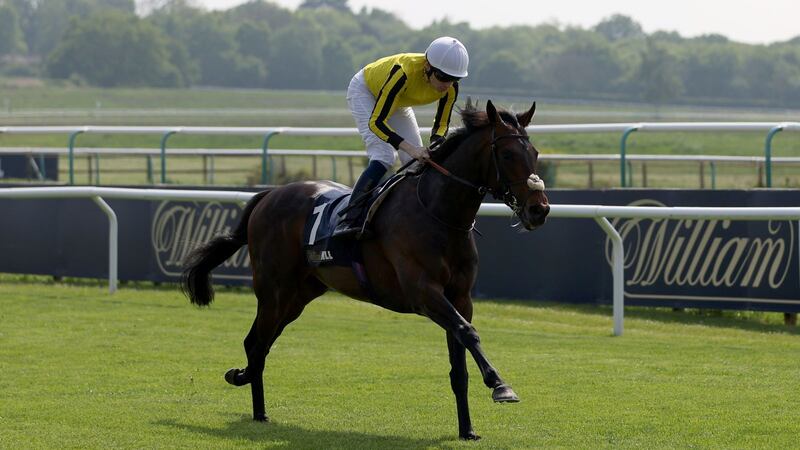If City Of Troy lined up in Sunday’s Dubai Duty Free Irish Derby there would be a competition debate about Ireland’s premier classic race. As it is, the most exciting horse in training skips the Curragh so there’s a prestige debate instead. Both discussions are well-worn about a race that’s beginning to look worryingly dated.
It’s 60 years since Santa Claus delivered a new Irish Derby era when completing the Epsom-Curragh double. Only Orby in 1907 had previously done it and that was when the Irish Derby was little more than a curio. But under new sponsorship the race filled a natural purpose as a Derby ‘decider’ following Epsom and Chantilly.
It didn’t always fulfil the brief because racing (and horses) doesn’t work like that. For decades, though, the Irish Derby had a defined role as a natural stepping stone for Europe’s best middle-distance three-year-olds. City Of Troy skipping the opportunity to become a 20th Epsom-Curragh Derby hero underlines how blurry that function has become.
It is 27 years since Aidan O’Brien emerged as the most prepotent figure in Derby history with his first success through Desert King. Auguste Rodin a year ago was his 15th. He has dominated the race like no other, a double-edged sword in competitive terms but with the major plus of a glittering roll of honour.
READ MORE
Blaming O’Brien and his Coolmore employers for domination is biting the hand that has fed the Irish Derby much of its credibility for the last two decades. Possessed of most of the best middle-distance three-year-olds through their gold mine sire Galileo, Coolmore have steadfastly supported the race in the face of often contrary commercial realities.
The compelling nature of those realities was underlined in 2005 when the French Derby was reduced from the traditional 1½ miles to an extended 10 furlongs. The move was an acknowledgment of how the longer trip is often a commercial negative in the stallion-making business.
France’s move has worked for the Prix Du Jockey Club. But it has fundamentally impacted upon the Irish Derby.
It’s no coincidence the last French Derby winner to run at the Curragh was Darsi in 2006. The classic Curragh scenario, such as a showdown between the Epsom winner Generous and the Chantilly hero Suave Dancer in 1991, was rare even then. But it is all but unimaginable now because the Irish Derby simply isn’t a commercial imperative any more.
If City Of Troy had won last month’s 2,000 Guineas instead of bombing out spectacularly, his speed would have been confirmed and perhaps allowed Coolmore facilitate a somewhat sentimental nod to the Curragh. But with the option of a potentially career-defining top-flight success at 10 furlongs just six days later, waiting for Sandown’s Eclipse is a no-brainer.
The consequence is a competitive race shorn of glamour, a result for those eager to bet on it but not for those concerned with the Irish Derby’s top-class appeal.

Ambiente Friendly’s presence alone underlines the point. He had to be supplemented into the race but got that paid for by the Curragh as part of its long-running ‘Win & You’re In’ scheme. That’s designed to encourage horses into the Irish Derby if they achieve criteria in other races, an initiative that basically boils down to paying people to line up.
Much more radical initiatives are required to boost a 1½ mile contest at the end of June that much of the rest of European racing appears increasingly happy to bypass. Pushing the Derby out to July, making perhaps a classic weekend with the Oaks, might be one option. But the French are unlikely to play ball by switching their Grand Prix de Paris on Bastille Day.
Emulating the French and dropping to 10 furlongs has been eyed suspiciously in the past as a reactionary response to fluctuating bloodstock fashions. But at this point the vogue towards speed over stamina is no fad. It’s regrettable for traditionalists and those of us appreciative of the capacity to carry speed over a trip but it’s not like racing hasn’t changed before when necessary.
In 1983 the Irish St Leger was opened to older horses. Strictly speaking it changed the Leger’s classic nature. But it was a realistic response to the growing threat of the race sliding towards top-level insignificance. The result is a Group One contest that fulfils a consequential purpose in the European pattern. Left untouched, it would have slipped down the pattern pecking order.
A 10-furlong Irish Derby would have almost certainly included City Of Troy. There’s a good chance the Jockey Club winner Look De Vega might have lined up too. There would be a clear logic to it. The default instinct for the connections of most Epsom winners is to drop in trip afterwards while it would also leave time to facilitate French instincts for a pre-Arc summer break.
Tradition is all well and good but as recent drops in trip for the Belmont Stakes in the US suggest, sometimes needs must. Endlessly talking but not considering what might be necessary to rejuvenate the Derby won’t stop the clock ticking on the race.
Something for the Weekend
Another consideration in advance of Sunday’s classic is keeping up the field size to encourage World Pool betting. As a result, Los Angeles won’t lack for Ballydoyle company, something veteran jockey Rab Havlin will be aware of on Ambiente Friendly as he chases a first winner in Ireland.
The ‘dark horse’ is MATSURI (4.05) who could hardly have been more impressive when winning a minor race at Leicester last week. The Roger Varian team are notably sweet on his chance and a major new star could emerge.
Veteran ICE COLD IN ALEX (6.05) is a Curragh stalwart who lines up in today’s seven-furlong handicap that he won in 2021. A recent promising return to form suggests he can repeat.
















